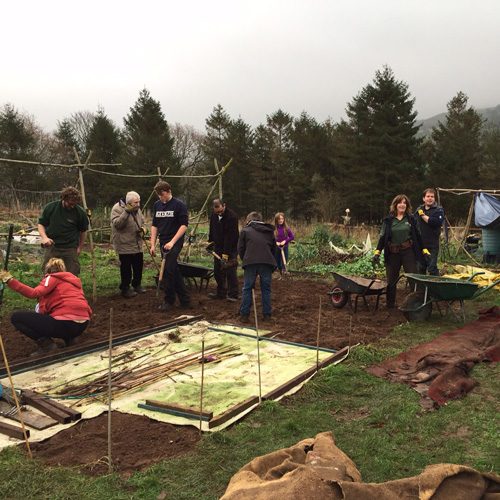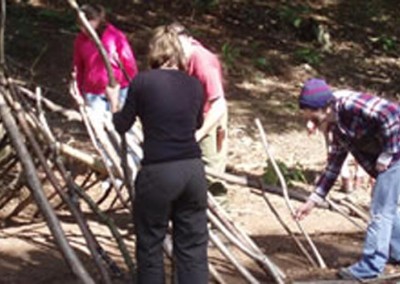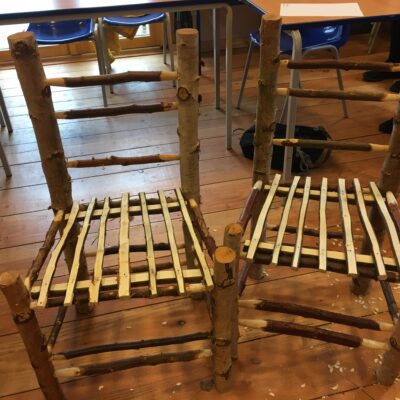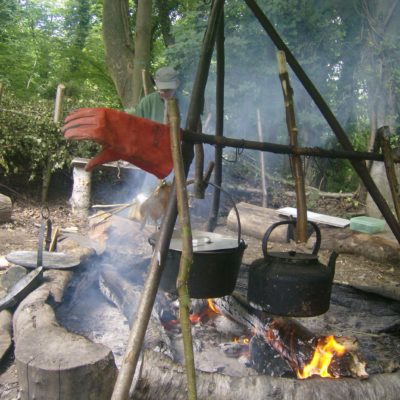Recently Llais y Goedwig initiated a pilot bursary scheme to support community woodlands attend Coed Lleol’s Social Forestry OCN course. The course explores the use of woodlands to promote social and human wellbeing, equipping trainees with the tools to apply Social Forestry ideas in practice – suitable for social foresters, woodland owners/managers and health, wellbeing and social care professionals. Here Roy from Beaufort Community Woodlands, a recipient of a pilot bursary reports back on his inspiring experience, and what he will be taking back to his group.
Having travelled up through the beautiful countryside of Mid Wales I arrived at the Bodfari Woodlands Skills Centre (pictured above) to a warm welcome from both Rod and Julia.
During the morning of the first day the group had an introduction to the ethos and belief behind the management of the woodlands; the idea the woodlands should have a Social, Environmental and Financial element: all of equal importance. The initial talk was followed by an overview of the History of the centre and the services it provides to its users. The afternoon session was led by Alan – with a tour of the woodlands, discussing how they managed the site via Coppice to standards or Continuous cover with much emphasis on the benefits to both the environment and diverse habitats. How rational management builds in long term resilience.
The first day was also covered with a mindfulness session – a type of meditation. Walking into the woodlands, trying to empty your mind of your worries, feeling the earth below your feet, allowing your senses to take in the sounds and smells around you. If this sounds very hippyish- do not knock it until you try it.
The course progressed over the next three days: covering aspects such as the human impact on woodlands well-being both negative and positive. A practical series of sessions where covered on: Woodland management – where the group removed pioneer silver birch saplings from a unique heathland habitat, Risk assessment for social forestry activities, Hazel coppicing, leading onto bush craft activities.
Important legal aspects were also discussed, such as woodland protection under law, the role of the Disclosure and Barring Service if you undertake activities with children. The final practical session allowed individuals to investigate their own interests, strengths or weaknesses. Most had the chance to sit astride a shave horse – paring down timber with a draw blade. Others cleave timber to manufacture bespoke artefacts. One or two more adventurous souls created Hazel hurdles; making use of a rounding plane. I am particularly pleased with the mallet manufactured from a solid piece of beech (I am simply pleased).
Following the attendance at the course there are two immediate impacts to my Society; to undertake the planting of a stand of Hazel for coppicing. It became apparent from the Social Forestry course that Hazel is a sustainable species for forest activities. When applying for grants in the future my society will be able to highlight the knowledge and experience gained from the course.
If you have the opportunity to attend this course, it’s a must for all those who are active within their own woodlands. It puts your personal experiences into context whilst filling in gaps within your own knowledge. If it was on trip advisor – I would have to rate it with five stars.
Roy, June 2016





